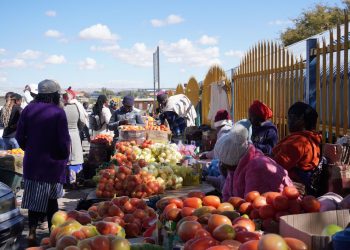
The government, through the Office of the Prime Minister, has made available N$139.3 million for disaster risk management programmes in the country, Deputy Prime Minister Netumbo Nandi-Ndaitwah has said.
As part of these programmes, the drought relief programme will continue in Kunene, Erongo and Omusati regions up to 31 March 2023.
“In addition, this programme will also cater for a relief programme of N$72 million, to support households affected by the floods in Ohangwena, Oshana and Omusati Regions. This support will be extended up to May 2024,” said Nandi-Ndaitwah while motivating the Office of the Prime Minister’s budget in the National Assembly this week.
Nandi-Ndaitwah said the Office will embark on various priority activities, amongst others, the continued development of the resilience strategy by the end of the financial year 2023/24 and finalise the risk profiles for all the regions, during the first quarter of the 2023/24 financial year.
“Roll out of the beneficiary registration and warehouse management system; The conduct of the 2023 Vulnerability Assessment and Analysis (VAA) in the first quarter of 2023/24 financial year, to determine the level of food security from the current harvest,†she added.
The Office of the Prime Minister last year coordinated the drought relief to Kunene Region, parts of Erongo Region and parts of Omusati Region, which entailed food assistance and water provision to communities.Â
The Deputy Prime Minister noted that the number of households assisted were 35,002 in Kunene Region, 6,185 in Erongo Region and 15,620 in Omusati Region at a cost of N$67 million to date.
“Following the heavy rains in Angola, flooding was experienced in some parts of Ohangwena, Oshana and Omusati Regions in January this year (2023). To date, 362 households in Ohangwena Region and 86 households in Oshana Region are affected, of which 93 households and 52 households in respective Regions are still housed in temporary relocation sites,†she said.
The Office facilitated the relief support which included temporary shelter, food assistance, and medical care.Â
This comes as the Integrated food security Phase Classification’s (IPC) acute food insecurity report for Namibia states that the food security situation is projected to worsen between January and March 2023, corresponding to the last and second half of Namibia’s lean season, with 390,000 people forecasted to experience high levels of acute food insecurity (IPC Phase 3 or above).
Similarly, earlier this month the Agricultural Bank of Namibia (Agribank) warned that poor rainfall performance since the start of the season could negatively impact food security, agriculture, rangeland rehabilitation, and livestock production.
The bank called for a contingency plan to address the potential threat to food security, agriculture, rangeland rehabilitation, and livestock production.Â
“It is critical that the government and other stakeholders come up with measures to ensure that the agriculture sector remains resilient and that food security is not compromised,” said the bank.Â
The Kavango East, Kavango West, Kunene, Omaheke, Oshikoto, and Otjozondjupa regions have the majority of people in food crisis. The tight labour market, high food, and fuel have further derailed food security, the bank grieved.











